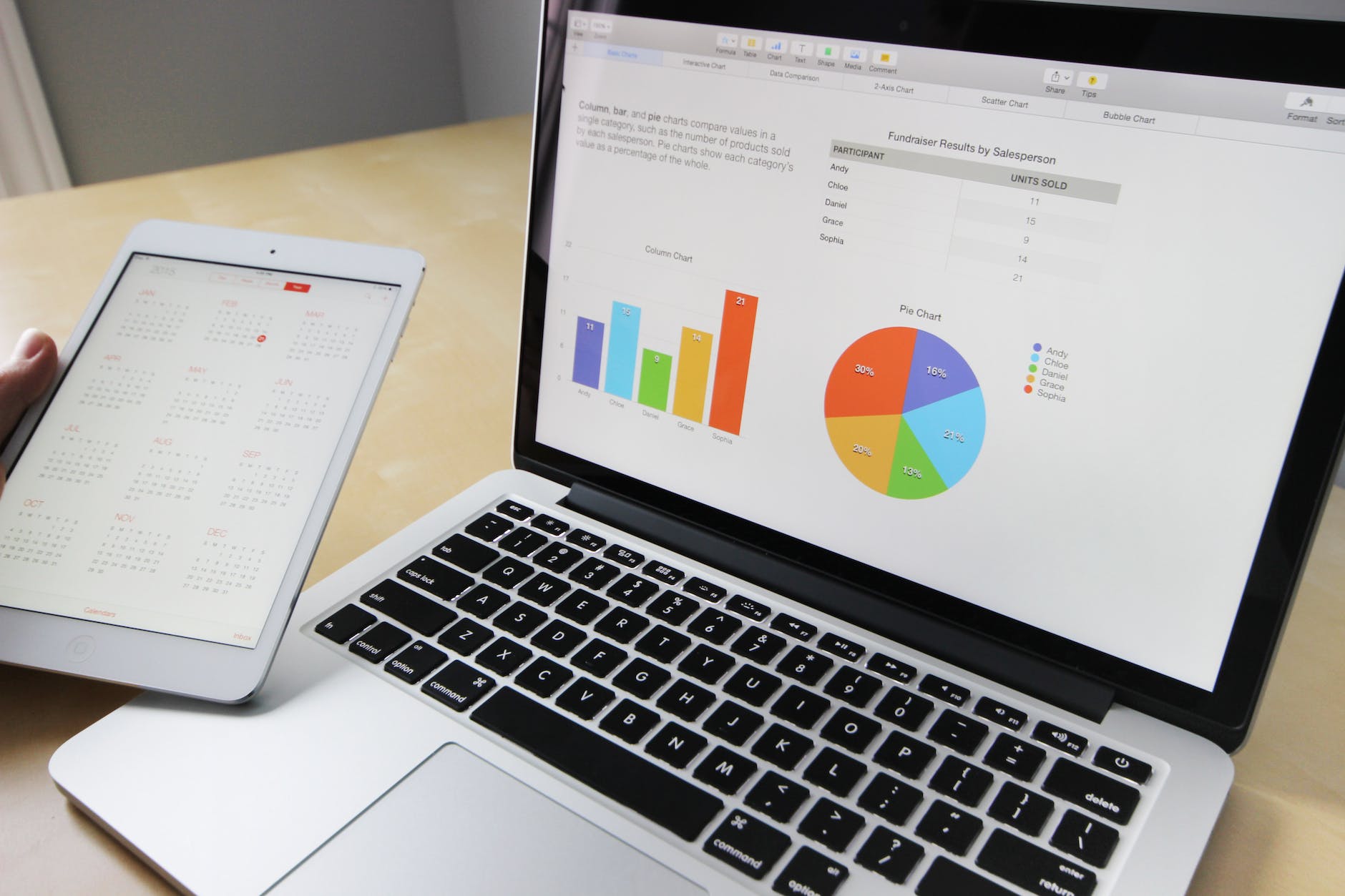A Comprehensive Guide to Boost Your Financial Health
Unlock the secrets to financial success for your small business with these essential financial ratios. Learn how to analyze and interpret key financial metrics to make informed decisions that will drive growth and profitability.
Are you a small business owner looking to gain better control over your company’s financial health? Understanding and monitoring key financial ratios is crucial for making informed decisions that can propel your business towards success. These ratios provide valuable insights into your company’s financial performance, profitability, liquidity, and efficiency. In this comprehensive guide, we will explore the essential financial ratios that every small business owner should know and how to interpret them effectively.
1. Gross Profit Margin
Metadescription: Discover the essential financial ratios that can help your small business thrive. Learn how to analyze and interpret key financial metrics for improved profitability and growth.
The gross profit margin is a fundamental ratio that indicates the profitability of your small business. It measures the percentage of revenue that remains after subtracting the cost of goods sold (COGS). A healthy gross profit margin suggests that your business is efficiently managing its production costs and pricing strategy.
To calculate the gross profit margin, subtract the COGS from your total revenue, and divide the result by the total revenue. Multiply the result by 100 to express it as a percentage. For example:
Gross Profit Margin = (Total Revenue - COGS) / Total Revenue * 100
A higher gross profit margin indicates greater profitability. It also provides insights into the effectiveness of your pricing strategy and the efficiency of your production processes. Comparing your gross profit margin to industry benchmarks can help you assess your performance and identify areas for improvement.
2. Net Profit Margin
The net profit margin is another vital ratio that assesses the overall profitability of your small business. It measures the percentage of revenue that remains as net profit after accounting for all expenses, including operating costs, interest payments, and taxes.
To calculate the net profit margin, subtract all expenses from your total revenue, and divide the result by the total revenue. Multiply the result by 100 to express it as a percentage. The formula is as follows:
Net Profit Margin = (Total Revenue - Total Expenses) / Total Revenue * 100
Monitoring your net profit margin helps you understand how efficiently your business is generating profits from its operations. It enables you to assess the impact of expenses on your bottom line and make informed decisions to optimize costs and improve profitability.
3. Current Ratio
The current ratio is a liquidity ratio that measures your small business’s ability to meet short-term financial obligations. It assesses whether your company has sufficient current assets to cover its current liabilities.
To calculate the current ratio, divide your current assets by your current liabilities. The formula is as follows:
Current Ratio = Current Assets / Current Liabilities
A current ratio greater than 1 indicates that your business has more current assets than current liabilities, suggesting a healthy liquidity position. It means you can meet your short-term financial obligations without difficulty. Conversely, a current ratio less than 1 may signal potential liquidity challenges and the need for immediate attention.
While a high current ratio is generally desirable, excessively high ratios may indicate an inefficient use of resources. It’s essential to strike a balance between liquidity and maximizing the utilization of assets.
4. Quick Ratio
The quick ratio, also known as the acid-test ratio, is a more conservative measure of liquidity than the current ratio. It determines your small business’s ability to meet short-term obligations using only its most liquid assets, such as cash, marketable securities, and accounts receivable.
To calculate the quick ratio, subtract inventories from current assets and divide the result by current liabilities.The formula for the quick ratio is as follows:
Quick Ratio = (Current Assets - Inventories) / Current Liabilities
The quick ratio provides a more accurate assessment of your business’s immediate liquidity position, as it excludes inventories, which may take longer to convert into cash. A quick ratio greater than 1 indicates that your business can meet its short-term obligations using its readily available assets. This ratio is particularly important for businesses with inventory that may have longer sales cycles.
5. Accounts Receivable Turnover
The accounts receivable turnover ratio measures how efficiently your small business collects payments from customers. It indicates the number of times your accounts receivable are collected and replaced within a specific period, typically a year.
To calculate the accounts receivable turnover ratio, divide your net credit sales by the average accounts receivable. The formula is as follows:
Accounts Receivable Turnover = Net Credit Sales / Average Accounts Receivable
A higher turnover ratio suggests that your business is effectively managing its credit policies and collecting payments promptly. It indicates a shorter cash conversion cycle and better working capital management. Conversely, a low turnover ratio may indicate issues with credit and collection processes, potentially leading to cash flow problems.
Monitoring this ratio over time and comparing it to industry averages can help you assess your credit and collection practices and make adjustments to optimize cash flow.
6. Inventory Turnover
The inventory turnover ratio measures how efficiently your small business manages its inventory. It indicates how quickly your inventory is sold and replaced within a specific period.
To calculate the inventory turnover ratio, divide the cost of goods sold (COGS) by the average inventory. The formula is as follows:
Inventory Turnover = Cost of Goods Sold / Average Inventory
A higher inventory turnover ratio suggests that your business is effectively managing its inventory levels, avoiding overstocking or obsolete inventory. It indicates a shorter cash-to-cash cycle and better working capital management. On the other hand, a low turnover ratio may indicate excessive inventory levels, tying up valuable resources and potentially leading to cash flow issues.
Analyzing the inventory turnover ratio helps you optimize inventory management, identify slow-moving or obsolete products, and make informed decisions to improve cash flow and profitability.
7. Debt-to-Equity Ratio
The debt-to-equity ratio measures the proportion of debt and equity financing used to support your small business’s operations. It assesses the level of financial risk and leverage in your company’s capital structure.
To calculate the debt-to-equity ratio, divide total debt by total equity. The formula is as follows:
Debt-to-Equity Ratio = Total Debt / Total Equity
A higher debt-to-equity ratio indicates that your business relies more heavily on debt financing, which may increase financial risk and interest expenses. Conversely, a lower ratio suggests a higher proportion of equity financing, which may provide greater stability.
The ideal debt-to-equity ratio varies across industries and depends on factors such as the business’s life cycle, profitability, and growth objectives. It’s important to compare your ratio to industry averages and consider your specific circumstances to determine the appropriate level of leverage for your business.
8. Return on Assets
The return on assets (ROA) ratio measures how effectively your small business utilizes its assets to generate profits. It indicates the percentage of net income generated per dollar of total assets.
To calculate the return on assets ratio, divide net income by total assets. The formula is as follows:
Return on Assets = Net Income / Total Assets
A higher ROA ratio suggests that your business is efficiently using its assets to generate profits. It indicates effective resource allocation and operational efficiency. Conversely, a lower ratio may indicate underutilization of assets or inefficiencies in operationsthat are affecting profitability.
Monitoring the return on assets ratio allows you to assess the effectiveness of your business’s asset management and identify areas for improvement. It helps you make informed decisions regarding investments, operational efficiency, and overall business strategy.
9. Return on Equity
The return on equity (ROE) ratio measures the profitability of your small business in relation to its shareholders’ equity. It indicates the return generated for each dollar of equity investment.
To calculate the return on equity ratio, divide net income by total equity. The formula is as follows:
Return on Equity = Net Income / Total Equity
A higher ROE ratio suggests that your business is generating strong returns for its shareholders. It indicates efficient use of equity capital and effective management of profitability. On the other hand, a lower ratio may indicate lower profitability relative to the level of equity investment.
The return on equity ratio is particularly important for small businesses seeking to attract investors or secure financing. It demonstrates the business’s ability to generate returns and provides insights into its financial stability and growth potential.
10. Cash Conversion Cycle
The cash conversion cycle (CCC) is a metric that assesses the efficiency of your small business’s cash flow. It measures the time it takes for cash invested in inventory and other operating expenses to be converted back into cash through sales.
To calculate the cash conversion cycle, add the average number of days for inventory turnover to the average number of days for accounts receivable collection and subtract the average number of days for accounts payable payment. The formula is as follows:
Cash Conversion Cycle = Days Inventory Outstanding + Days Sales Outstanding - Days Payable Outstanding
A shorter cash conversion cycle indicates that your business is generating cash quickly and efficiently. It suggests effective management of inventory, prompt collection of receivables, and optimized payment of payables. By shortening the cash conversion cycle, your business can improve cash flow and maintain better control over working capital.
Analyzing the cash conversion cycle helps you identify bottlenecks in the cash flow process and implement strategies to accelerate cash inflows and delay outflows.
In Conclusion
Understanding and analyzing these essential financial ratios empowers small business owners to make data-driven decisions and optimize their financial performance. By regularly monitoring and interpreting these ratios, you can identify areas of strength and weakness in your business, make informed adjustments to your strategies, and drive growth and profitability.
Remember, financial ratios provide valuable insights, but they are most effective when used in conjunction with industry benchmarks, historical data, and a deep understanding of your business’s unique circumstances. Regularly reviewing and interpreting these ratios will help you stay on top of your financial health, make proactive decisions, and position your small business for long-term success.
So, take charge of your financial future and unlock the power of financial ratios today!


